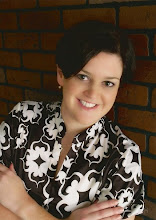
[Easter Bunny Fraktur, attributed to Johann Conrad Gilbert (1734–1812). Winterthur]
Together with the Christmas tree, the custom of the Easter rabbit and colored eggs was brought to America by immigrants from southwestern Germany in the 1700s, and has become a favorite American tradition.
Recently, the Winterthur Museum acquired one of the earliest known American depictions of the Easter Bunny from the Pook & Pook auction house in Downingtown, Pennsylvania. This delightful image is attributed to schoolmaster Johann Conrad Gilbert (1734–1812), who emigrated from Germany in 1757 and ultimately settled in Berks County, Pennsylvania. He likely made the drawing as a gift for one of his students. A similar drawing, also attributed to Gilbert, is in the collection of Colonial Williamsburg.
These drawings are examples of a Pennsylvania German tradition of decorated manuscripts known as fraktur, which include birth and baptismal certificates, family records, writing samples, and bookplates.
Lisa Minardi, a fraktur expert and assistant curator of the museum’s current exhibition, Paint, Pattern & People: Furniture of Southeastern Pennsylvania, 1725–1850, notes, “The Easter rabbit drawing is one of the rarest of all fraktur, with only two examples known, and is a major addition to Winterthur’s collection.”
“This important acquisition allows Winterthur to document the Germanic beginnings of a beloved American tradition,” adds J. Thomas Savage, Winterthur’s director of museum affairs.
The drawing will be on view in the museum Galleries starting Friday, April 22. It will remain on display through the Easter holiday and Mother’s Day, when it will be taken down and treated by the museum’s conservation staff to remove dirt and grime from the paper. Ultimately, it will be placed on long-term view in the museum’s renowned Fraktur Room, where it will join about two dozen other examples of Pennsylvania German fraktur art.
………………………………..
Winterthur—known worldwide for its preeminent collection of American decorative arts, naturalistic gardens, and research library for the study of American art and material culture— offers a variety of tours, exhibitions, programs, and activities throughout the year. Winterthur is located northwest of Wilmington, Delaware. For information visit winterthur.org.
The drawing will be on view in the museum Galleries starting Friday, April 22. It will remain on display through the Easter holiday and Mother’s Day, when it will be taken down and treated by the museum’s conservation staff to remove dirt and grime from the paper. Ultimately, it will be placed on long-term view in the museum’s renowned Fraktur Room, where it will join about two dozen other examples of Pennsylvania German fraktur art.
………………………………..
Winterthur—known worldwide for its preeminent collection of American decorative arts, naturalistic gardens, and research library for the study of American art and material culture— offers a variety of tours, exhibitions, programs, and activities throughout the year. Winterthur is located northwest of Wilmington, Delaware. For information visit winterthur.org.










No comments:
Post a Comment